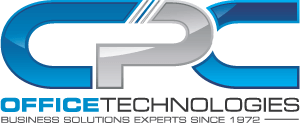
Deciding between leasing or buying an office copier is a common dilemma we hear from business owners looking to upgrade their equipment. At CPC Office Technologies, we guide teams across Florida and Alabama through this choice, considering factors like budget, usage, and long-term needs. It's not just about the upfront cost; it's finding what aligns with your operations to keep things running smoothly.
We know every business is different, whether you're a small firm in real estate or a larger organization in healthcare. Our experience shows that the right decision can save time and money while supporting productivity. We focus on practical advice to help you weigh the options without the guesswork.
Let's explore the key aspects together, drawing from what we've seen work for our clients. This guide will clarify the models and help you see which might suit your setup best. We're here to make the process straightforward and supportive.
The Copier Leasing Model Explained
Leasing a copier means you pay a fixed monthly fee for use, maintenance, and supplies, much like renting with added perks. We handle the details through our equipment leasing options, ensuring you get modern machines without a large initial investment. This model includes service agreements that keep downtime low, so your team stays productive.
Many of our clients choose leasing for its flexibility, allowing upgrades as technology advances without being stuck with outdated gear. We customize terms to fit your volume and industry needs, whether high-speed printing for legal documents or color capabilities for marketing materials. It's a hassle-free way to access top equipment from brands we trust.
In practice, leasing simplifies budgeting by turning a big purchase into manageable payments. Our plans often cover toner and repairs, reducing surprises. This approach has helped businesses in education maintain reliable tools for classrooms without straining funds.
Capital Expense: Pros & Cons of Buying
Buying a copier outright as a capital expense gives you full ownership, which can be appealing if you prefer long-term asset control. We see this work well for stable environments where usage doesn't fluctuate much, avoiding ongoing lease fees. Plus, you can depreciate the cost over time for tax benefits, as noted in general business accounting practices.
On the downside, the upfront cost can be significant, tying up capital that might be better used elsewhere. Maintenance falls on you, potentially leading to unexpected repair bills if not covered by warranty. We've helped clients navigate this by offering office copiers with extended support options to mitigate risks.
Ultimately, buying suits those with predictable needs and the budget to invest upfront. It provides equity in the equipment, which could be resold later. However, for growing teams, the lack of flexibility in upgrades can become a drawback over time.
Predictable Costs vs Asset Ownership
Leasing offers predictable monthly costs, bundling everything into one bill for easier forecasting. We design these plans to include service and supplies, eliminating variables like toner shortages or breakdowns. This stability is a favorite among procurement leaders in SMBs who value consistent expenses.
Asset ownership from buying means no recurring payments after the initial purchase, but it requires planning for ongoing maintenance. Our clients often weigh this against potential savings, finding that ownership can pay off if the copier lasts several years without issues. However, fluctuating repair costs can disrupt budgets unexpectedly.
In our partnerships, we emphasize how leasing's OpEx model supports cash flow, while buying's CapEx builds equity. Each has its place depending on your financial strategy. We help analyze your usage to determine which provides the best return.
Copier Maintenance & Upgrade Dynamics
With leasing, maintenance is typically included, meaning we handle repairs and updates to keep your copier performing optimally. This proactive service reduces downtime, as our technicians monitor and address issues remotely when possible. It's a relief for busy teams who don't want to manage vendor calls or parts ordering.
Buying shifts maintenance responsibility to you, which can mean lower long-term costs if you have in-house support, but it risks higher expenses for major fixes. Upgrades are more complicated, often requiring a full replacement sooner than expected. We've assisted buyers by extending warranties through our proactive support to bridge this gap.
Leasing shines in upgrade dynamics, allowing swaps for newer models at lease end without resale hassles. This keeps you current with features like cloud integration. Overall, it offers peace of mind for evolving needs.
Who Should Lease & Who Should Buy?
Leasing is ideal for businesses expecting growth or technology changes, like startups or hybrid offices needing flexibility. We recommend it for those prioritizing low upfront costs and bundled services, ensuring scalability without commitment to one machine. It's particularly helpful in industries like hospitality, where demands vary seasonally.
Buying fits established companies with steady printing volumes and the capacity to handle maintenance internally. If you value ownership and potential tax deductions, this model can make sense long-term. Our clients in government often lean this way for asset control and budget allocation.
We assess factors like your print volume and IT resources to guide the choice. Neither is one-size-fits-all; it's about matching to your operations. This personalized view helps avoid regrets down the line.
Case Scenarios: SMB vs Enterprise Needs
For small-to-mid-sized businesses (SMBs), leasing often wins by providing access to high-end copiers without draining resources. We see SMBs in accounting benefit from included maintenance, freeing limited staff for client work. A typical scenario involves starting with a basic multifunction device and upgrading as the team expands.
Enterprises with high-volume needs might prefer buying for customization and ownership, especially if they have dedicated IT teams. However, we've helped larger organizations in healthcare lease fleets for consistency across locations. This avoids the complexity of managing multiple purchases.
In both cases, we tailor solutions—leasing for agility in SMBs, buying for control in enterprises. Real-world examples show leasing reducing costs by [InsertStat] for growing firms, while buying suits stable environments. It's about aligning with your scale and goals.
Making the Smart Choice for Your Office Copier
We've covered the key considerations, and it's evident that both leasing and buying have their strengths depending on your situation. At CPC, we're focused on helping you select the option that enhances efficiency and fits your budget seamlessly.
Ready to explore your options? Let's connect to discuss the best fit for your needs.
